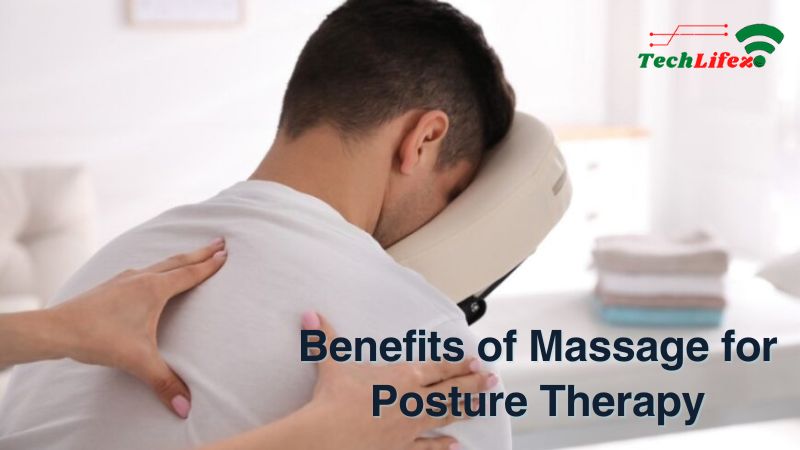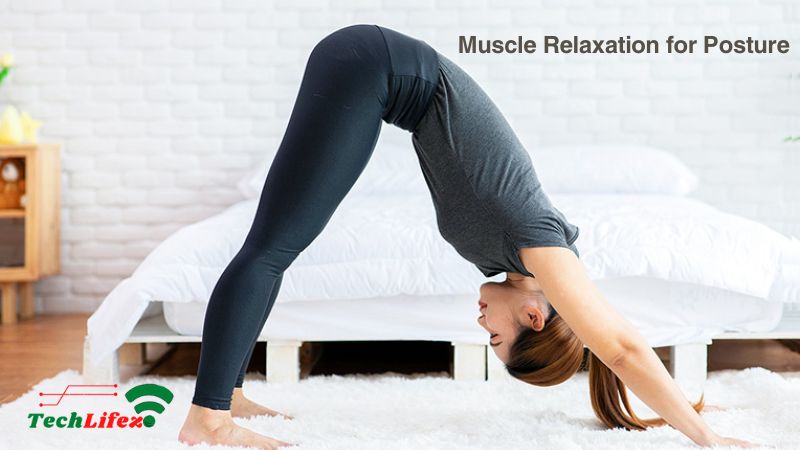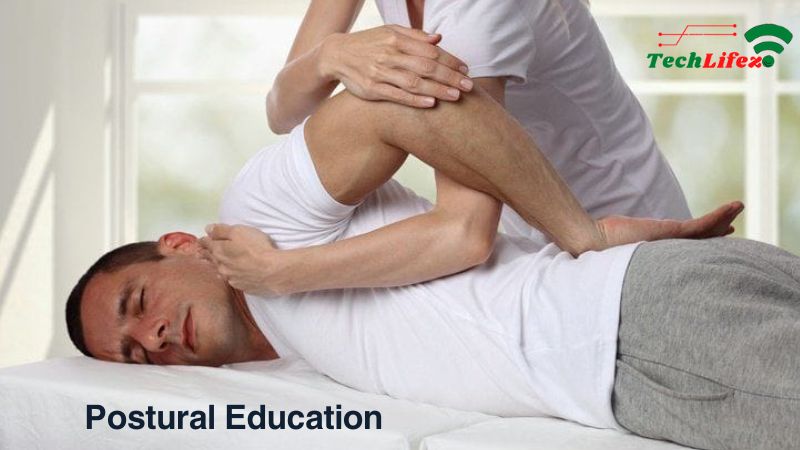In today’s sedentary lifestyle, maintaining good posture has become increasingly challenging for many individuals. Whether it’s prolonged hours spent hunched over desks or slouching while scrolling through smartphones, poor posture can lead to a host of musculoskeletal issues and discomfort. Fortunately, amidst this modern dilemma, the ancient practice of massage therapy emerges as a powerful ally in the quest for improved posture. In this article, Techlifez delve into the multifaceted benefits of massage for posture and how it can significantly contribute to better overall well-being.
Contents
The Benefits of Massage for Posture Therapy
1. Muscle Relaxation:
One of the most profound benefits of massage for posture lies in its ability to induce muscle relaxation. Throughout our daily routines, muscles often become tense and tight due to stress, overuse, or improper alignment. However, with targeted massage techniques, therapists can effectively alleviate this tension, allowing muscles to unwind and adopt a more natural position. As muscles relax, they no longer pull the body out of alignment, thereby promoting better posture.
2. Increased Flexibility:
Massage therapy stands as a revered practice celebrated for its profound impact on enhancing flexibility and range of motion throughout the body. Through a repertoire of kneading and stretching techniques, skilled therapists effectively alleviate tension, lengthen tight muscles, and promote mobility in stiff joints. The resultant improvement in flexibility not only mitigates the risk of muscular imbalances but also fosters the ability to sustain correct posture with enhanced comfort. As clients engage in regular massage sessions, they embark on a journey towards experiencing newfound liberation in their movements, thus nurturing the cultivation of optimal posture and overall well-being.
3. Improved Circulation:
In addition to its renowned impact on flexibility and range of motion, massage therapy offers another compelling benefit for posture: the enhancement of circulation throughout the body. Through the skilled manipulation of soft tissues, massage promotes increased blood flow to muscles, facilitating the delivery of essential nutrients and oxygen while aiding in the removal of metabolic waste products. This heightened circulation not only nourishes the muscles, promoting relaxation and reducing fatigue but also equips them to better support proper posture. By fostering improved blood flow, massage therapy contributes significantly to overall spinal health and alignment, thereby enhancing posture and well-being.
4. Release of Trigger Points:
In the pursuit of better posture, addressing trigger points within the muscles is paramount. These localized areas of tension, commonly referred to as knots, can significantly impede proper alignment and range of motion. Fortunately, massage therapy offers an effective solution for releasing trigger points and restoring muscular balance. Through targeted pressure and manipulation, therapists can coax tense muscles into relaxation, alleviating the strain on surrounding structures. As trigger points dissipate, individuals experience greater ease in maintaining correct posture.
5. Enhanced Body Awareness:
Beyond its physical benefits of massage for posture, massage therapy fosters heightened body awareness, a crucial component of achieving and sustaining good posture. Through the tactile feedback provided during massage sessions, individuals become attuned to their body’s sensations and areas of tension. This increased awareness extends beyond the treatment room, empowering clients to make conscious adjustments to their posture throughout daily activities. By cultivating mindfulness and sensitivity to bodily cues, individuals can proactively address postural imbalances and prevent future discomfort.
6. Stress Reduction:
In the modern, fast-paced world, stress and tension often wreak havoc on posture, contributing to its decline. Fortunately, massage therapy emerges as a sanctuary of relaxation amid the chaos, offering respite from the detrimental effects of stress on the body. Through the skilled application of kneading techniques, therapists alleviate muscular tension, inducing a profound state of relaxation in the nervous system and reducing levels of stress hormones like cortisol. As stress diminishes, muscles relinquish their grip, enabling the body to naturally adopt a more aligned and upright posture, thus fostering overall well-being and postural health.
7. Postural Education:
In addition to hands-on therapy, massage sessions often incorporate valuable postural education, empowering clients with the knowledge and tools to maintain optimal alignment. Through personalized assessments and guidance, therapists can pinpoint areas of concern and offer practical strategies for improving posture. Whether it involves ergonomic adjustments in the workplace or targeted exercises to strengthen weak muscles, this educational component equips clients with a holistic approach to posture maintenance. By integrating these insights into their daily routine, individuals can cultivate lasting postural awareness and resilience.
Closing Thought:
In conclusion, the benefits of massage for posture are myriad and far-reaching, offering a holistic approach to spinal health and alignment. From promoting muscle relaxation and flexibility to enhancing circulation and reducing stress, massage therapy addresses the underlying factors contributing to poor posture. Moreover, through the cultivation of body awareness and personalized postural education, individuals are empowered to take an active role in improving their alignment and well-being. As we navigate the demands of modern life, let us not overlook the transformative potential of massage therapy in fostering a posture that radiates strength, balance, and vitality.




